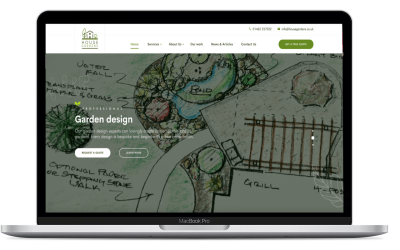How Psychological Web Design Influences Website Creation
A well-crafted website goes beyond aesthetics. It taps into psychological principles to create an environment that engages and converts visitors. Let's explore how psychological web design shapes the creation of a compelling website.
Strategic Use of Layout
Research-driven layout choices, grounded in cognitive psychology, guide users effortlessly through a website. The arrangement of elements, guided by known patterns like the F-pattern or Z-pattern, ensures intuitive navigation. This flow leads users to essential information and calls to action without causing frustration.
Color Psychology
Colors evoke emotions and influence behaviors. By understanding and applying color psychology, web designers select hues that align with a brand’s message and elicit desired responses. For instance, blue often instills trust and calm, making it popular for financial and healthcare websites.
Typography & Readability
Typography plays a crucial role in user experience. Fonts are chosen not just for aesthetic appeal but for readability and psychological impact. Sans-serif fonts, for example, are often used for their modern and approachable feel, while serif fonts lend a touch of tradition and trustworthiness.
Minimalism and Focus
A minimalist design eliminates distractions, enabling visitors to focus on key messages and calls to action. By reducing clutter, designers ensure that users are not overwhelmed, facilitating better decision-making processes.
Interactive Elements
Interactive elements, such as clickable graphics or sliders, engage users and encourage them to spend more time on the site. These elements provide immediate feedback, giving users a sense of control and satisfaction.
Flexibility and Security
A flexible design adapts seamlessly to various devices, ensuring a consistent experience for users whether they are on a smartphone, tablet, or desktop. Additionally, incorporating robust security measures gives users peace of mind, further boosting their trust in the website.
Summary
Psychological web design is a powerful tool that influences every aspect of website creation—from layout and color choices to typography and interactive elements. By leveraging these principles, designers build websites that are not only visually appealing but also highly effective in engaging and converting visitors.






























